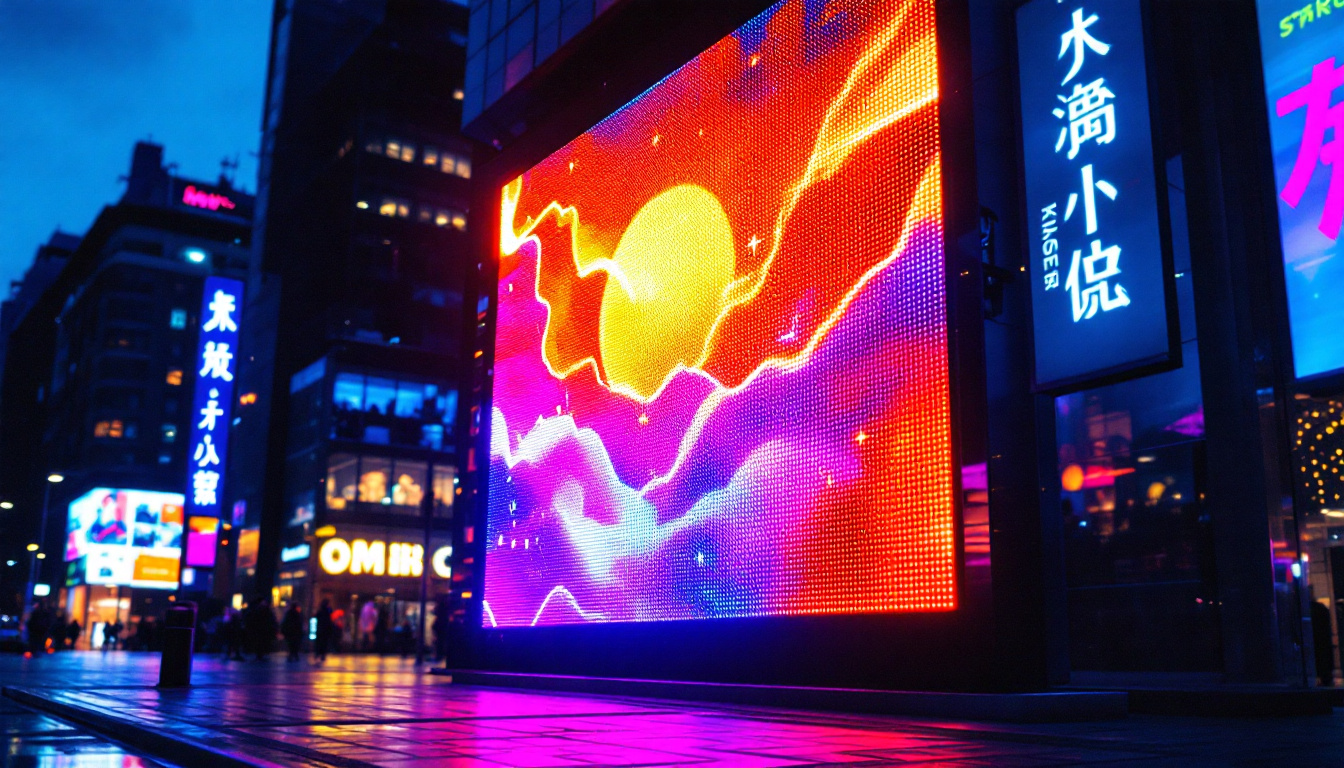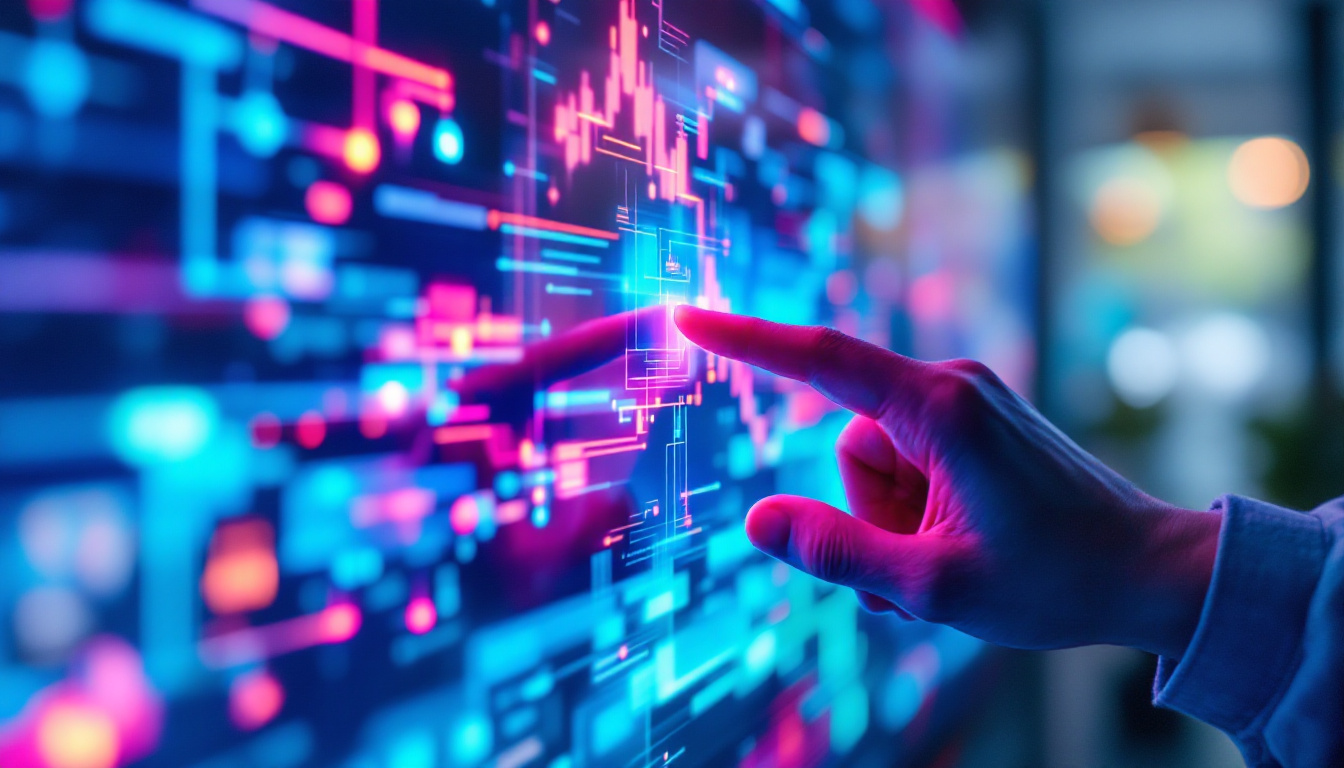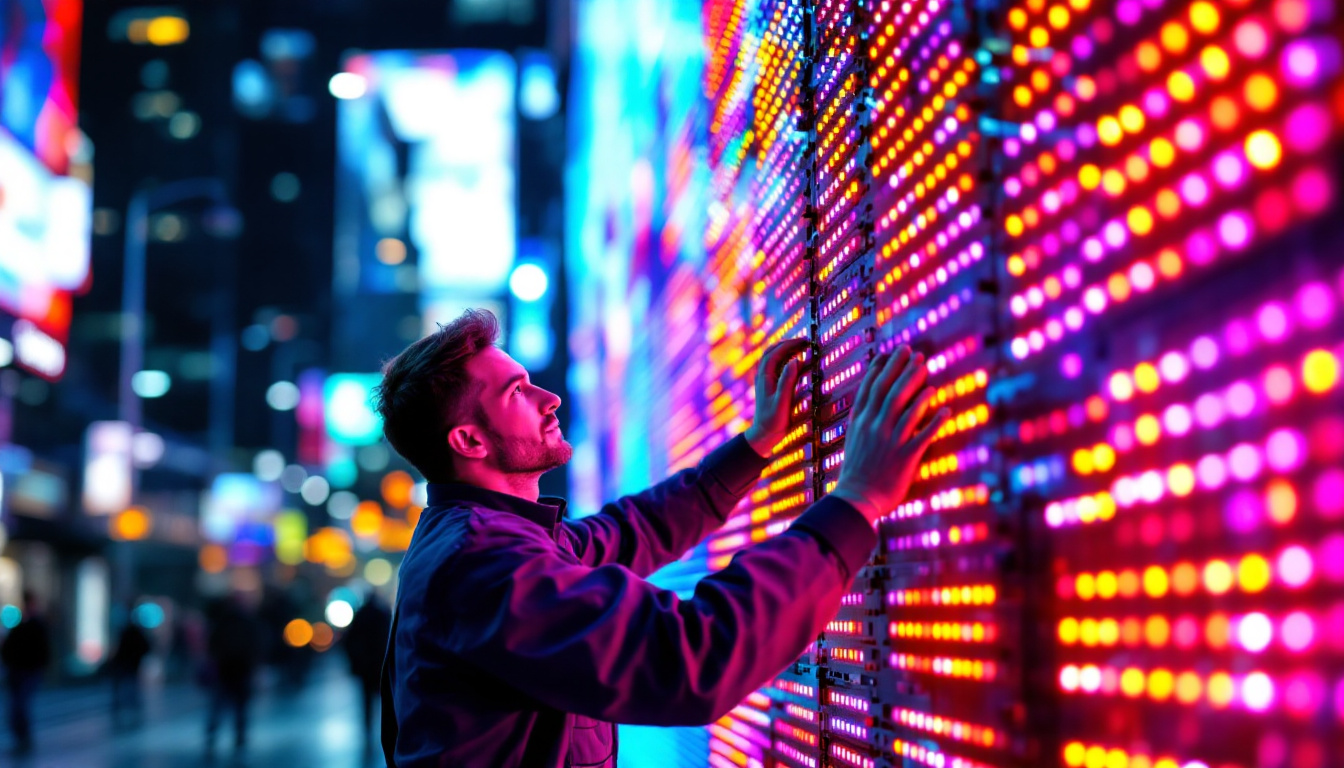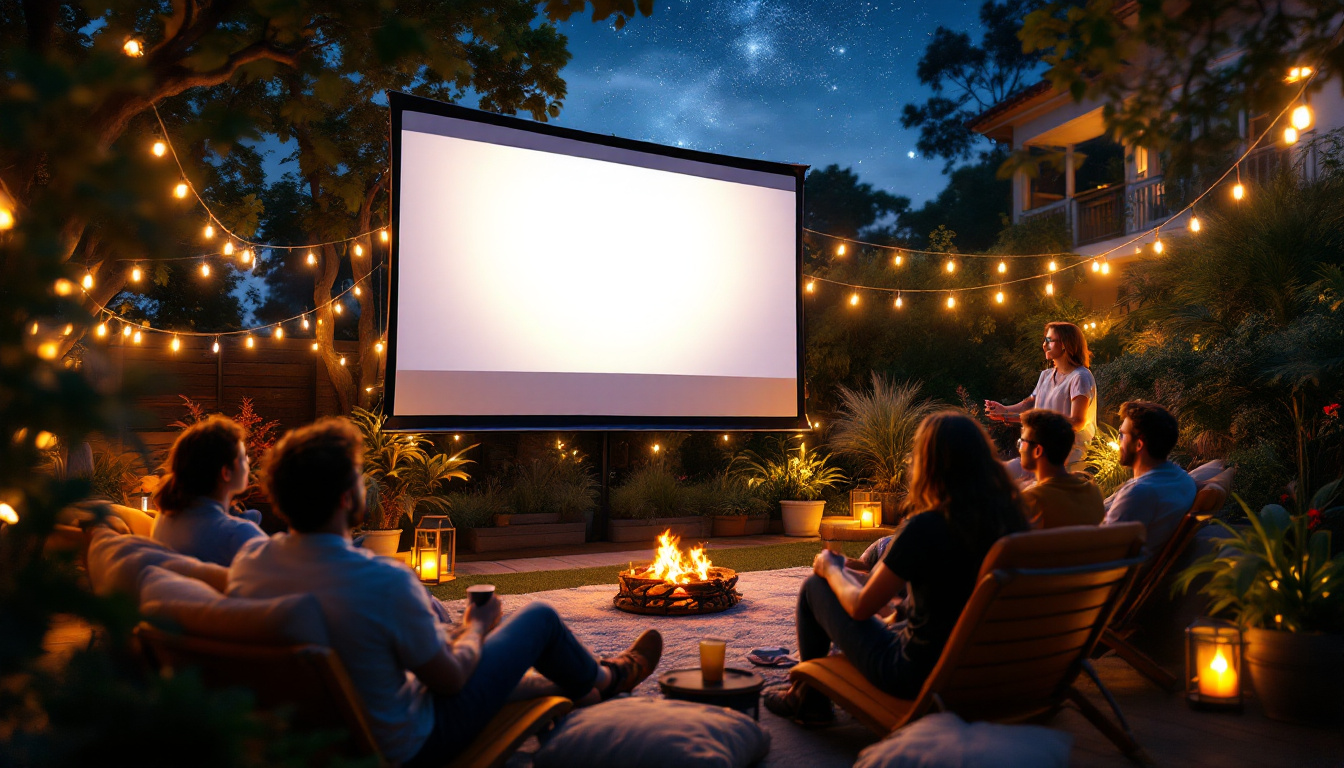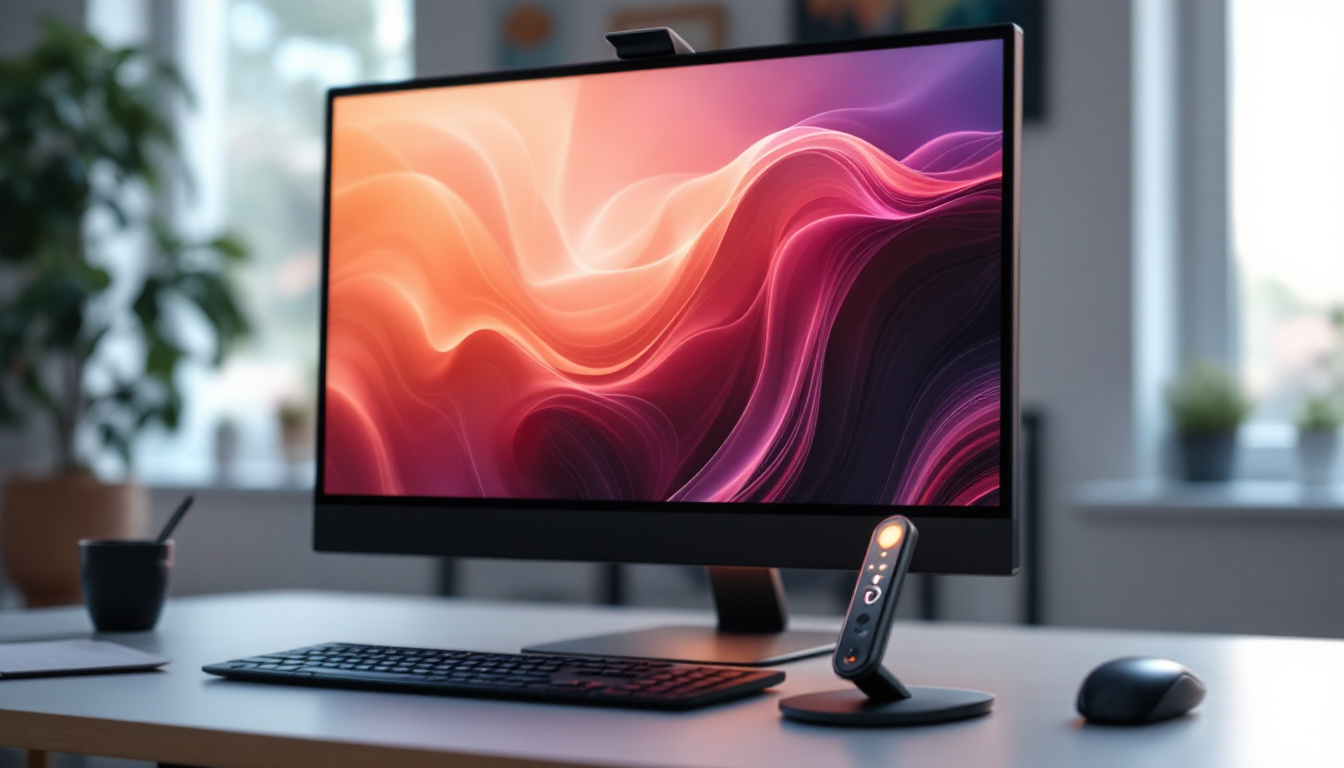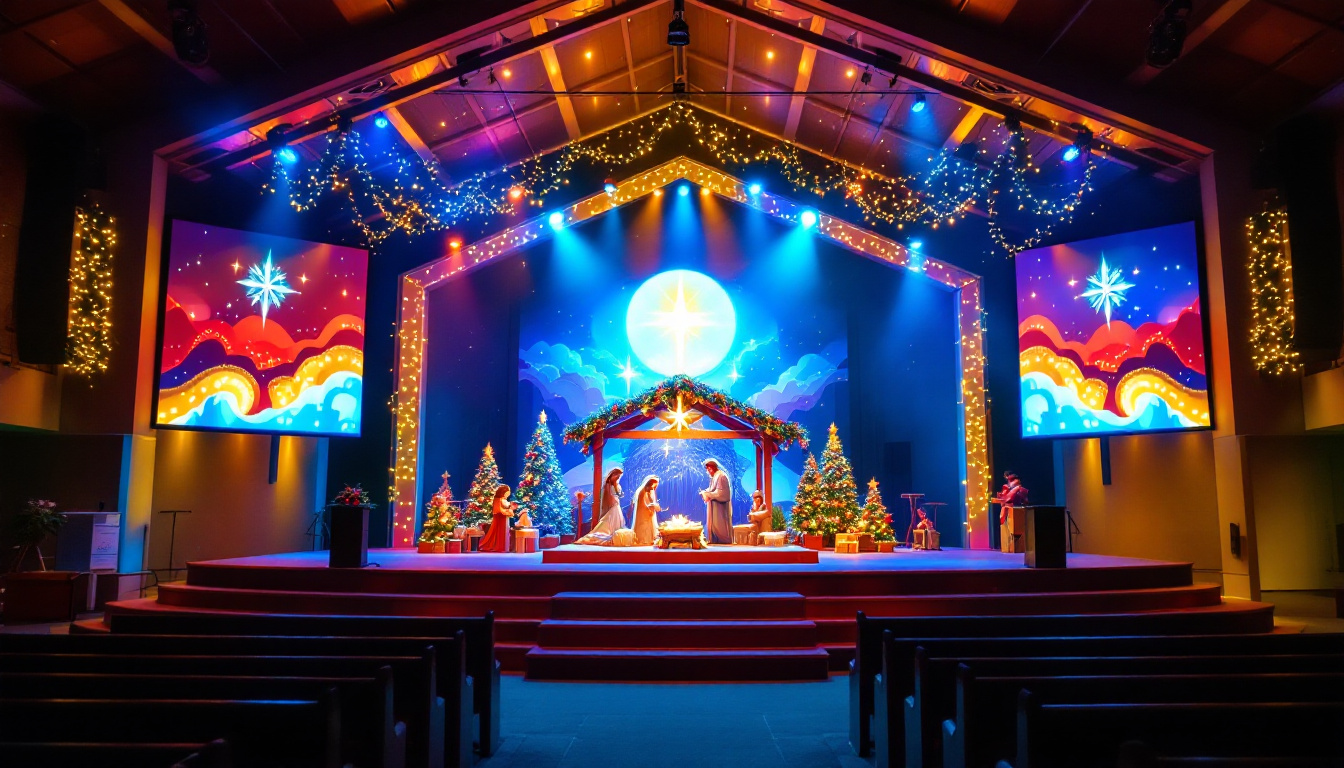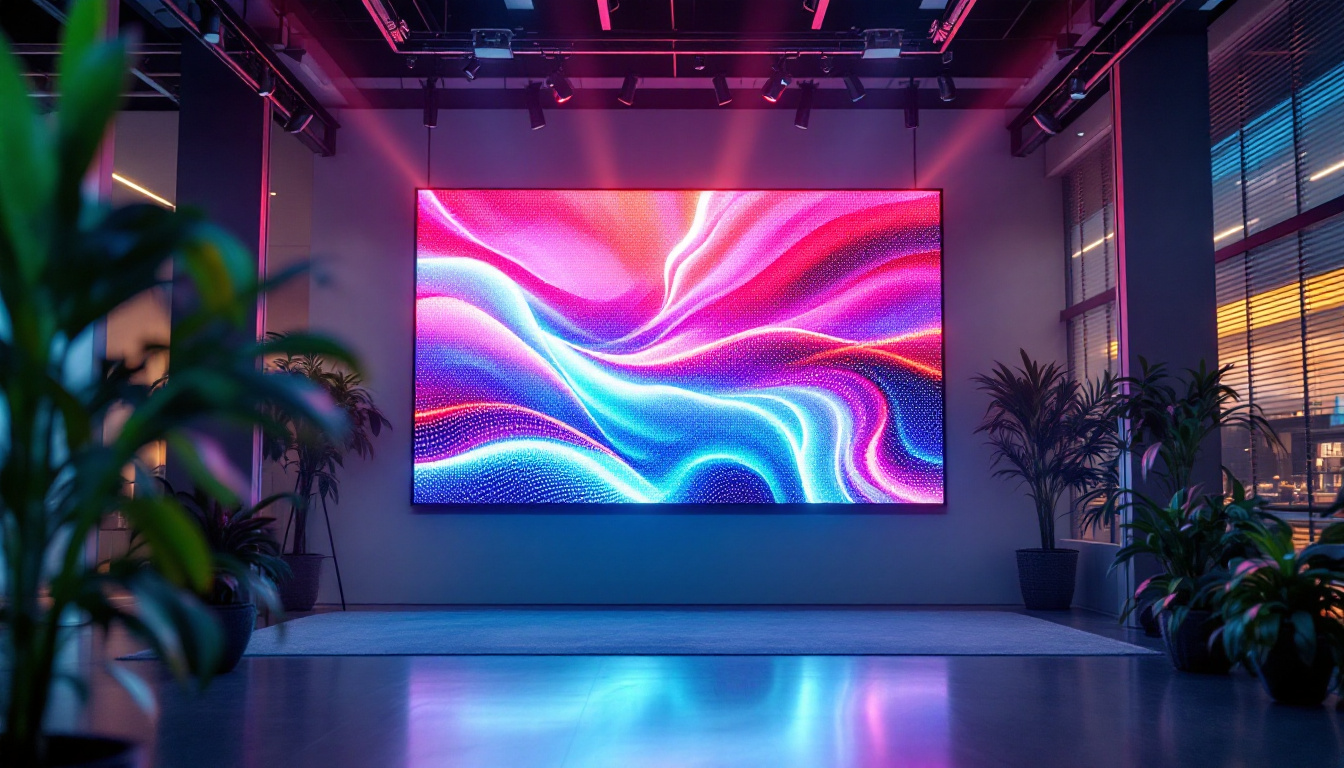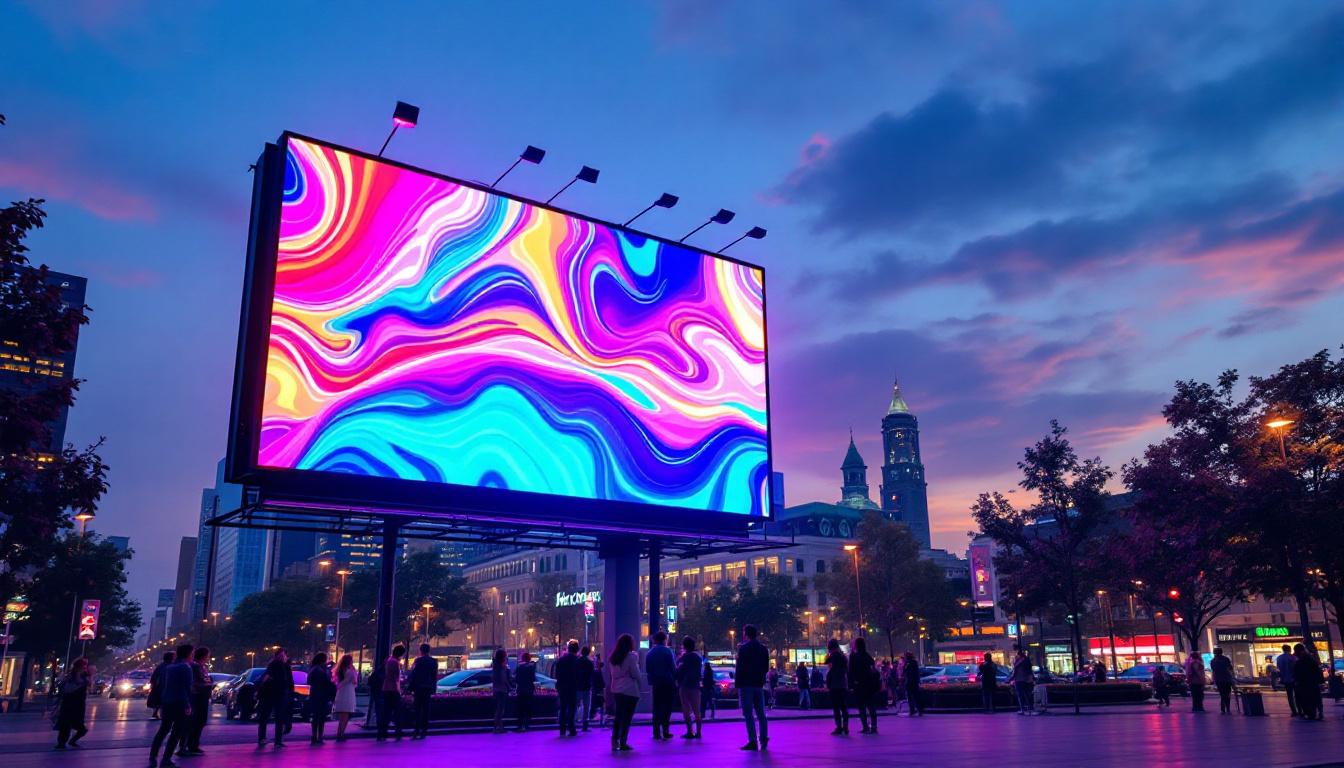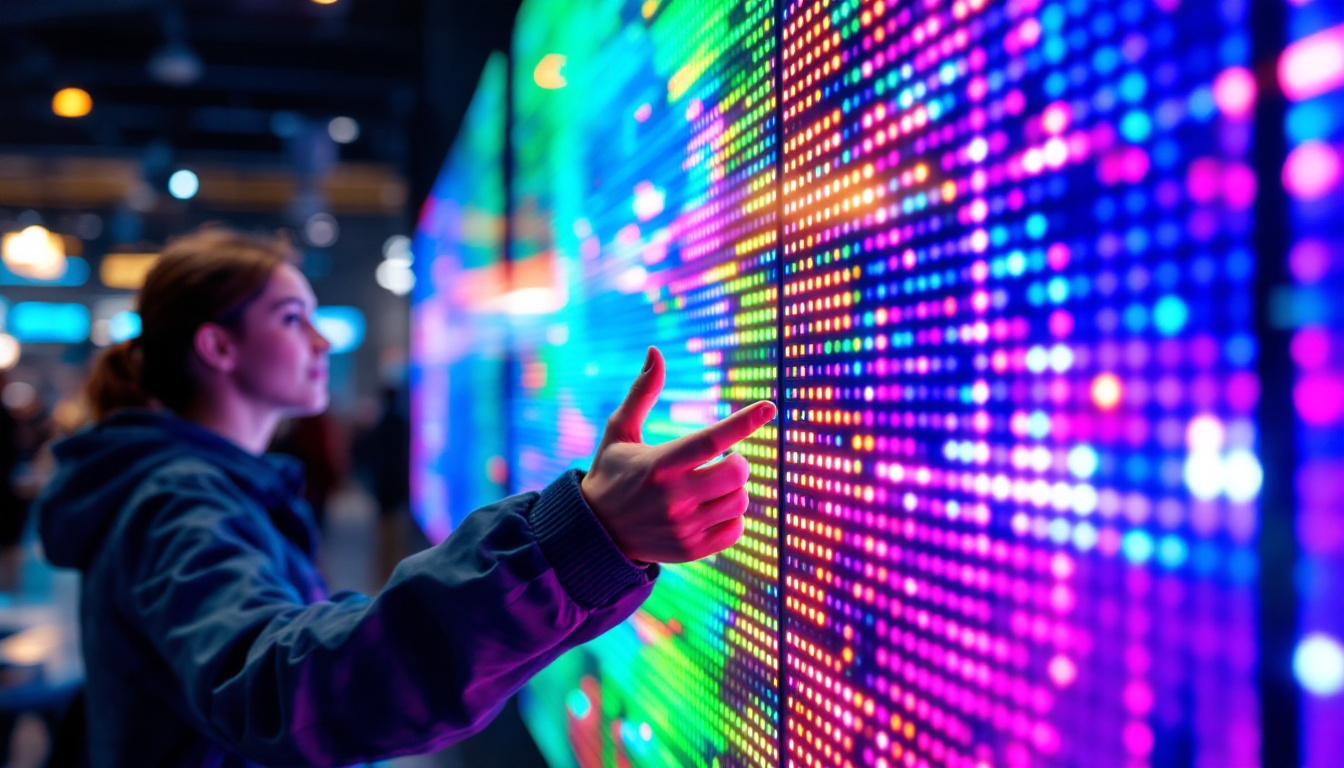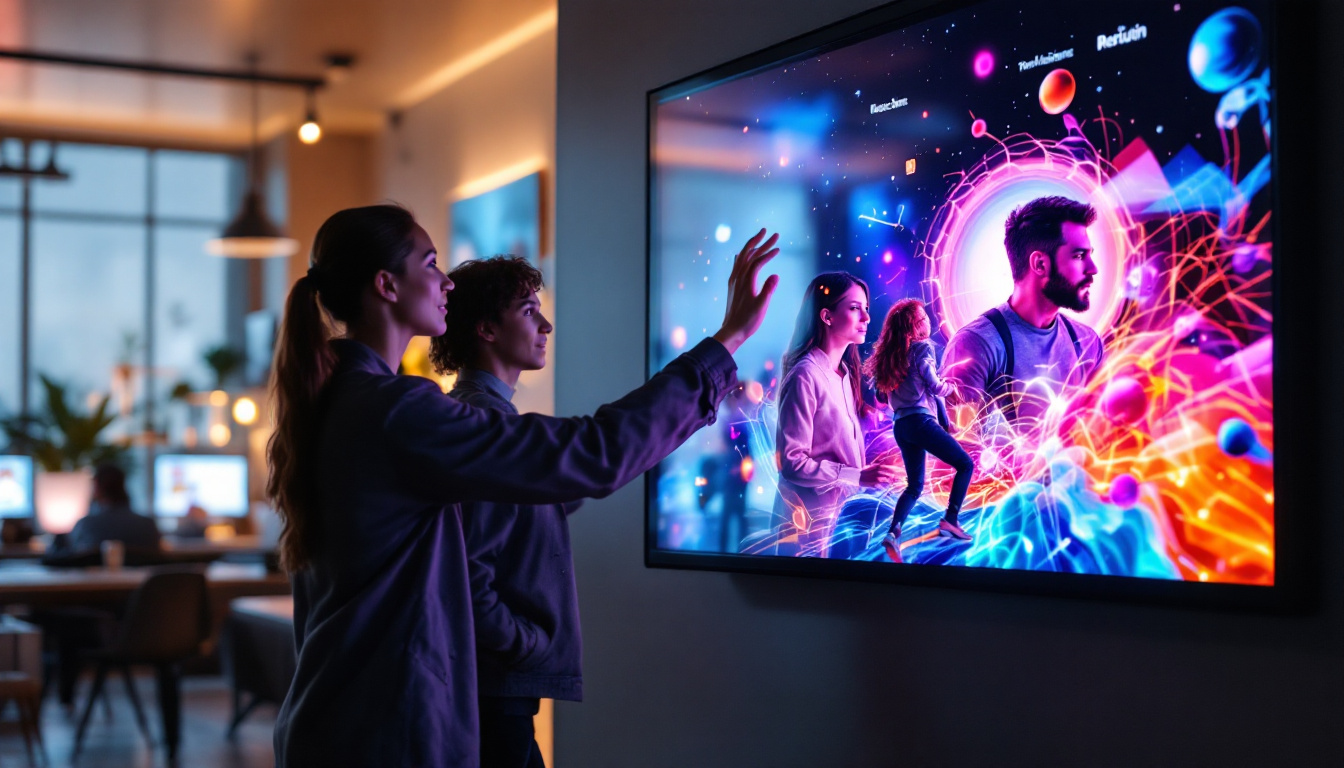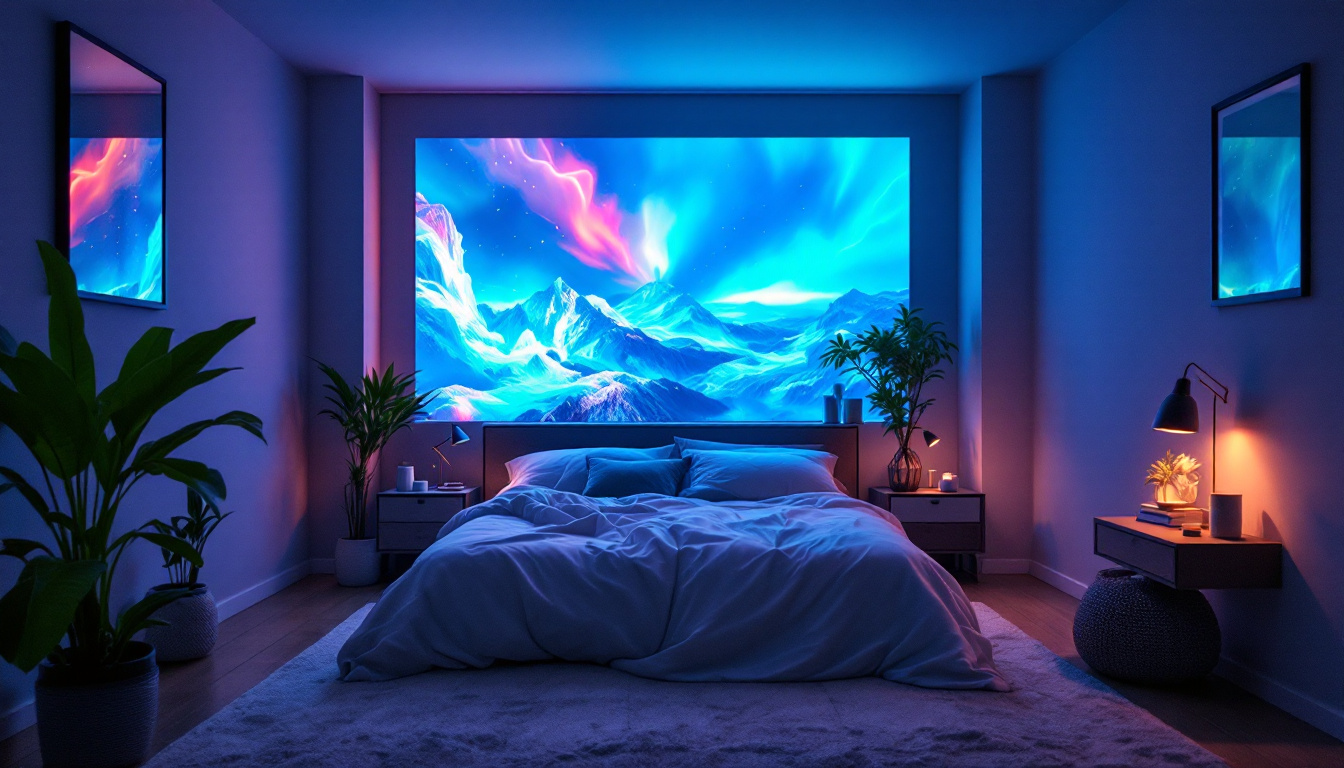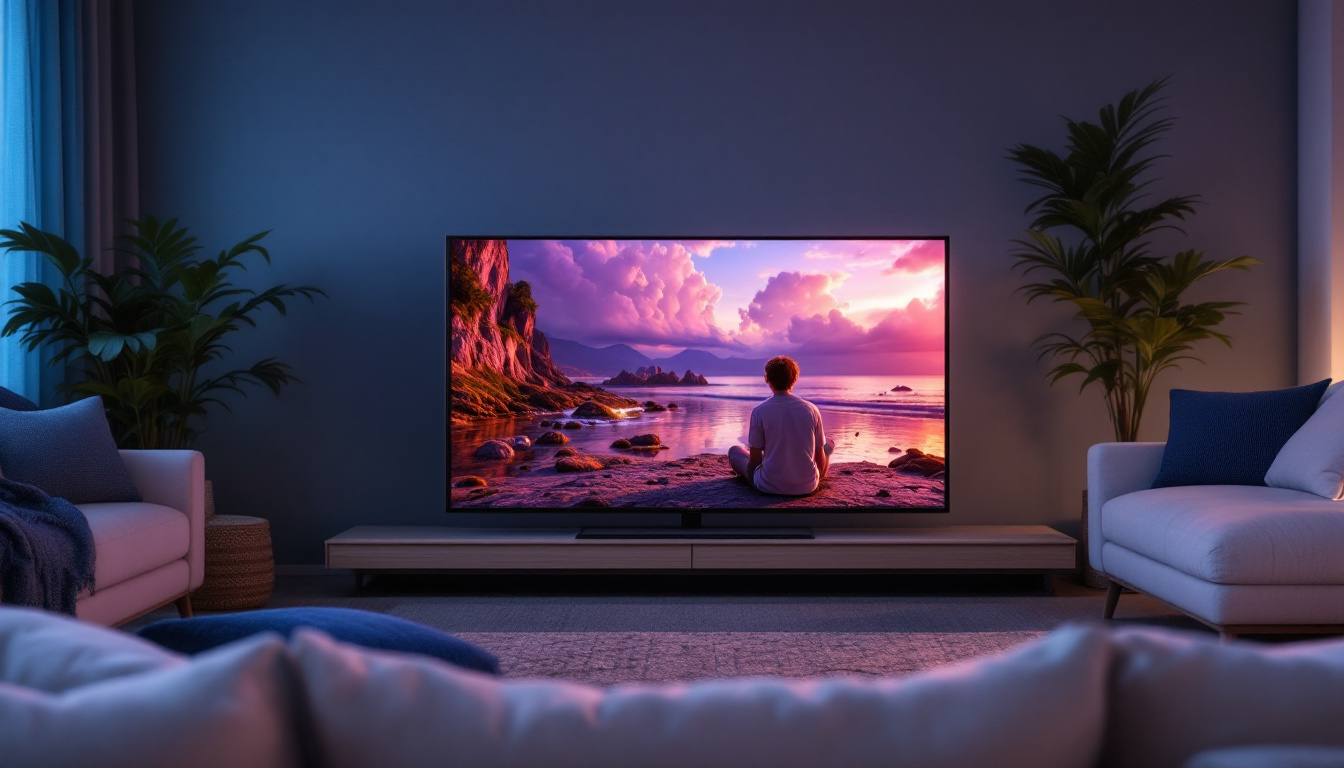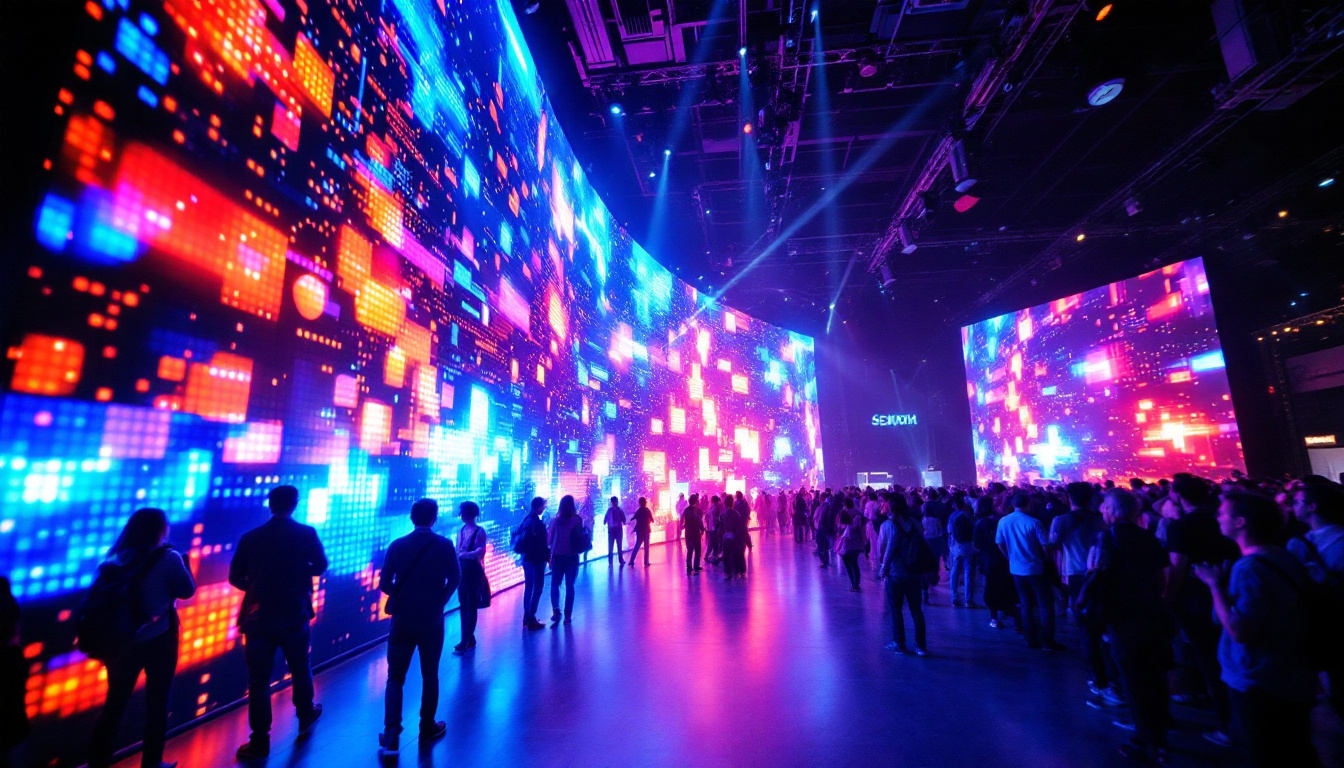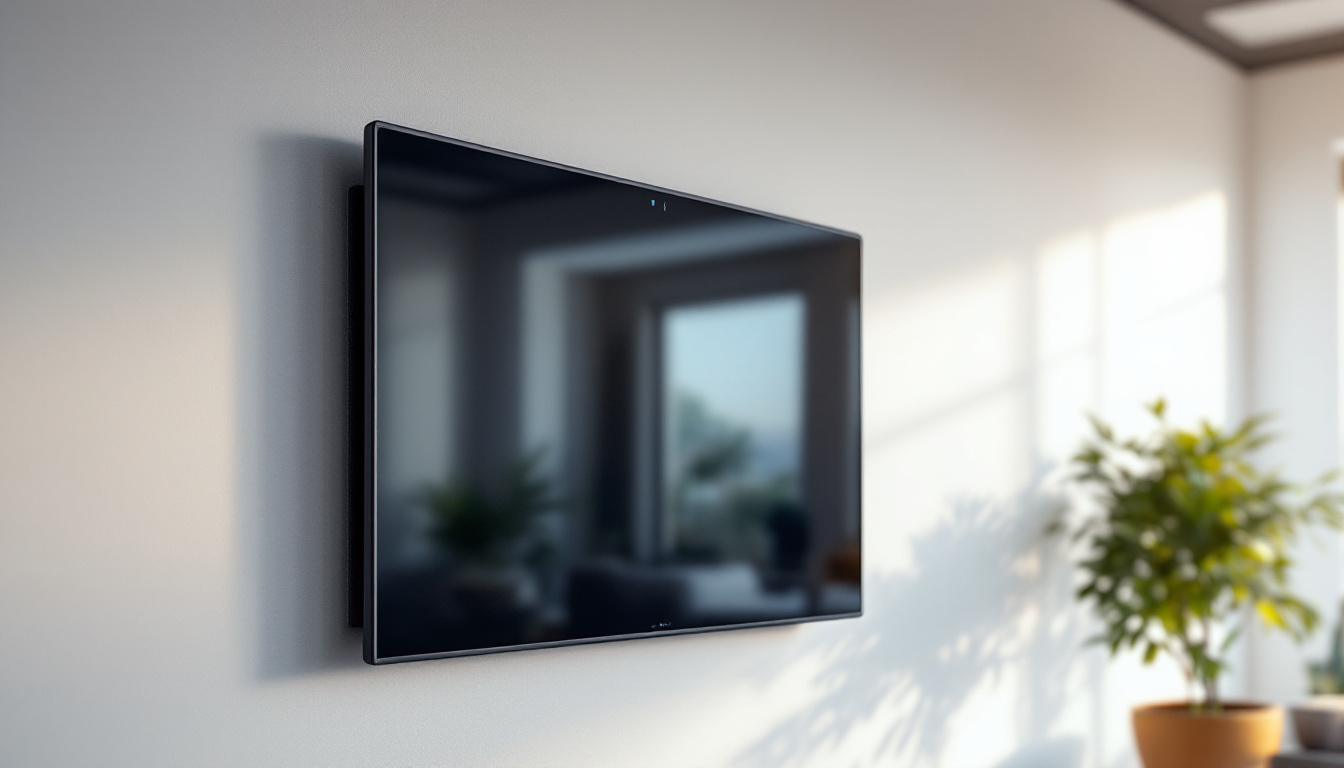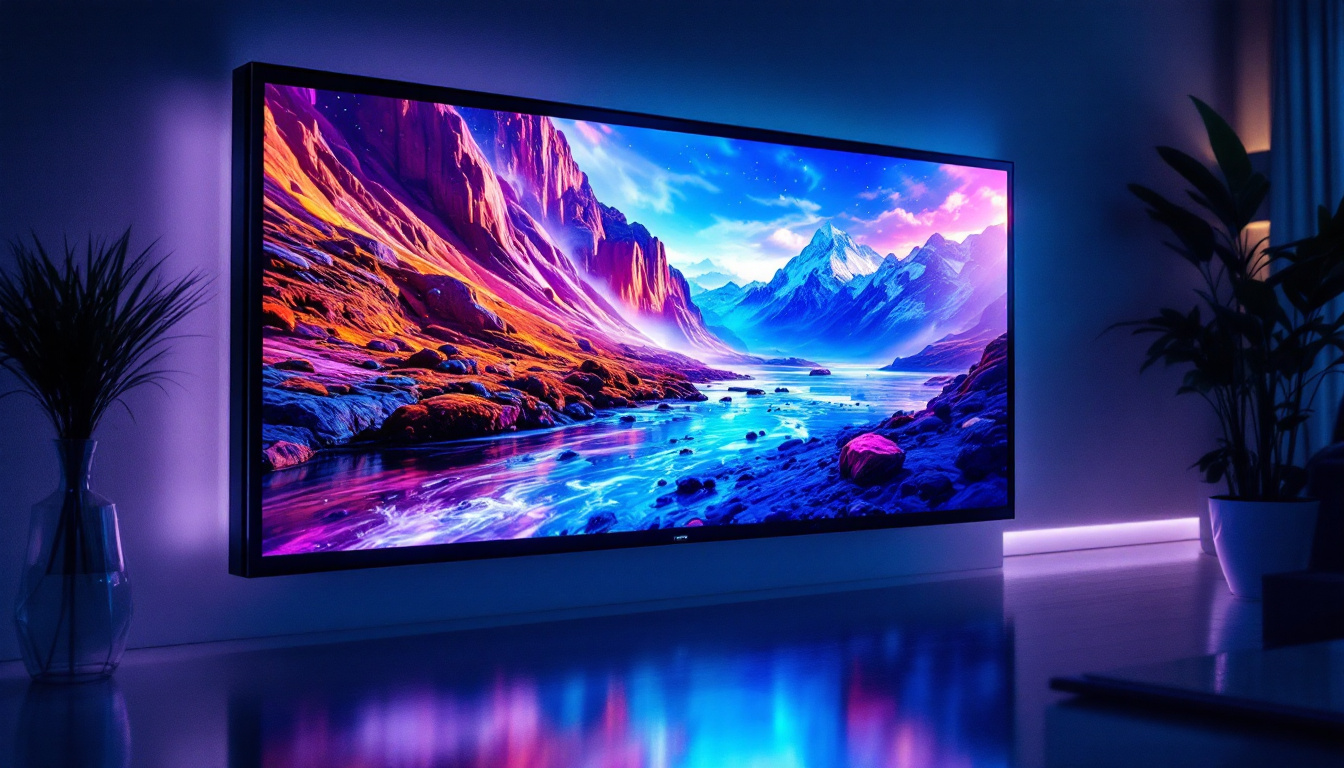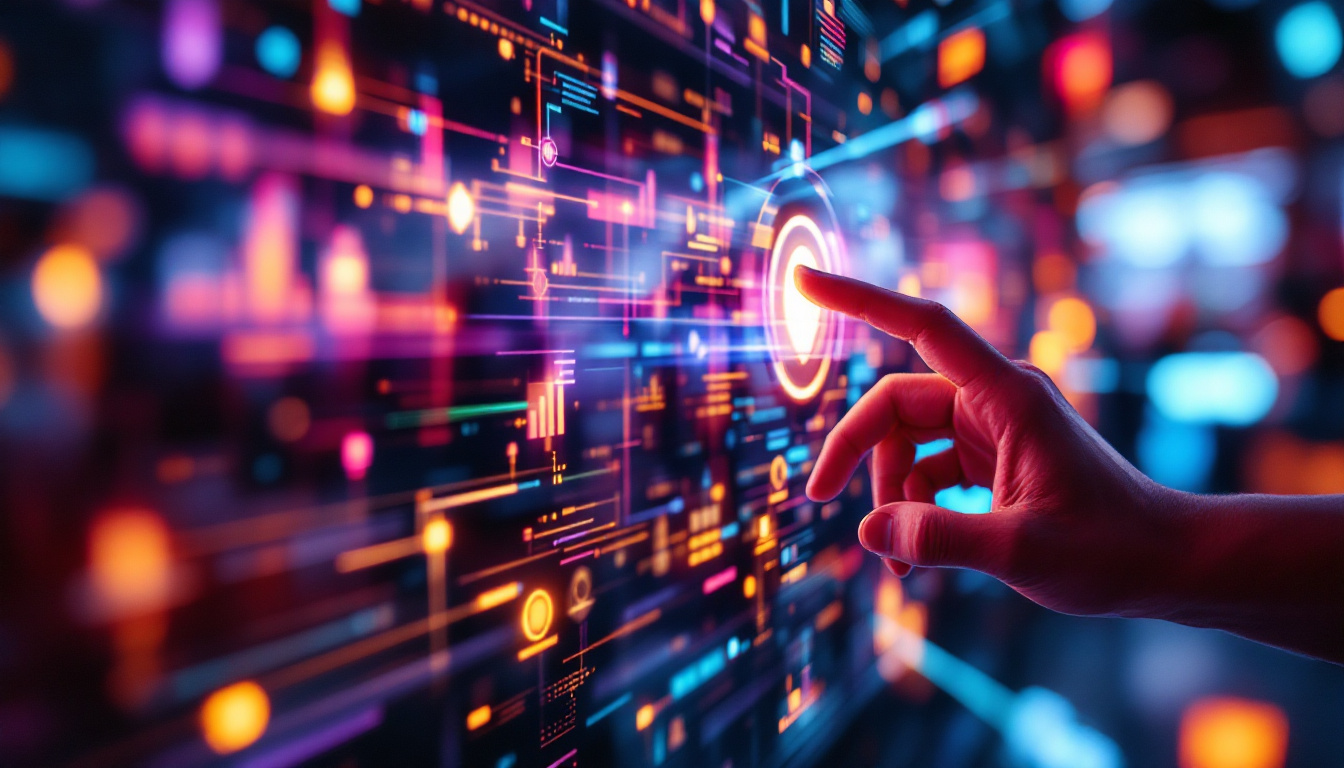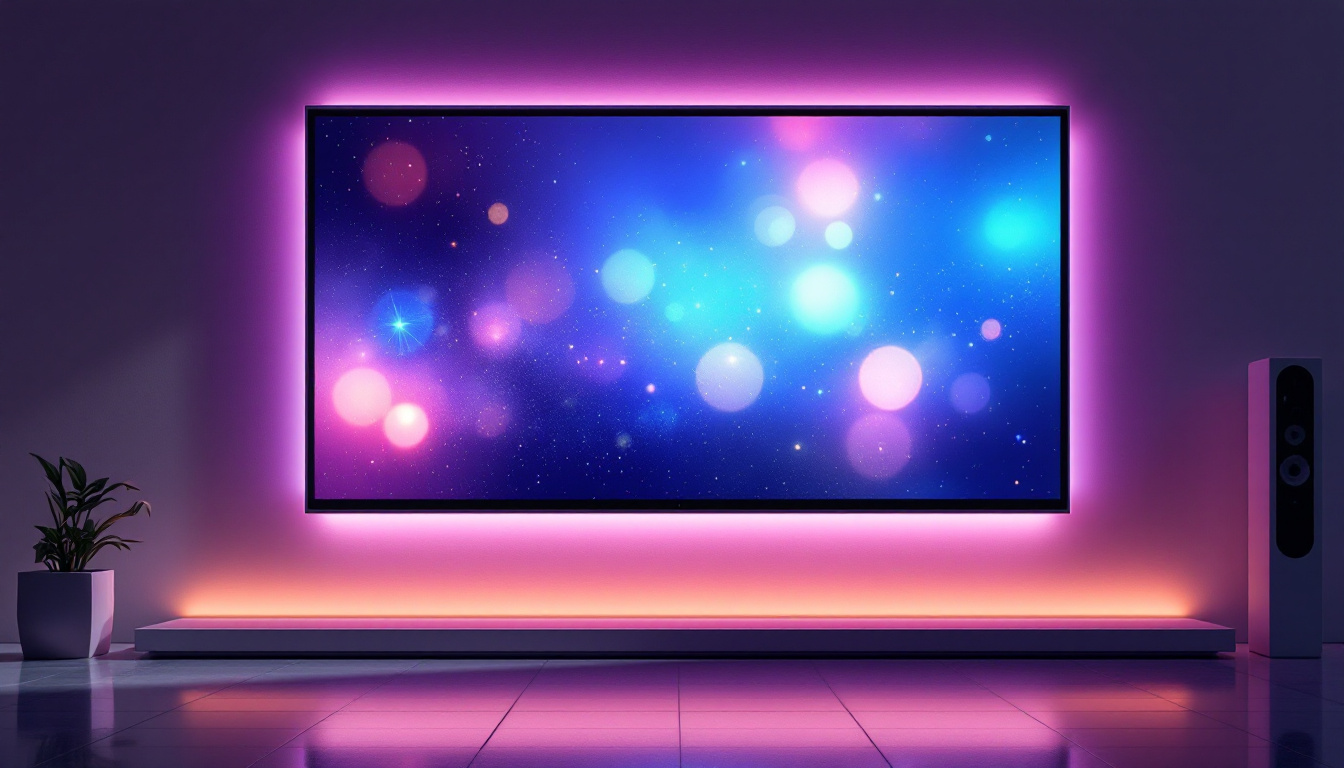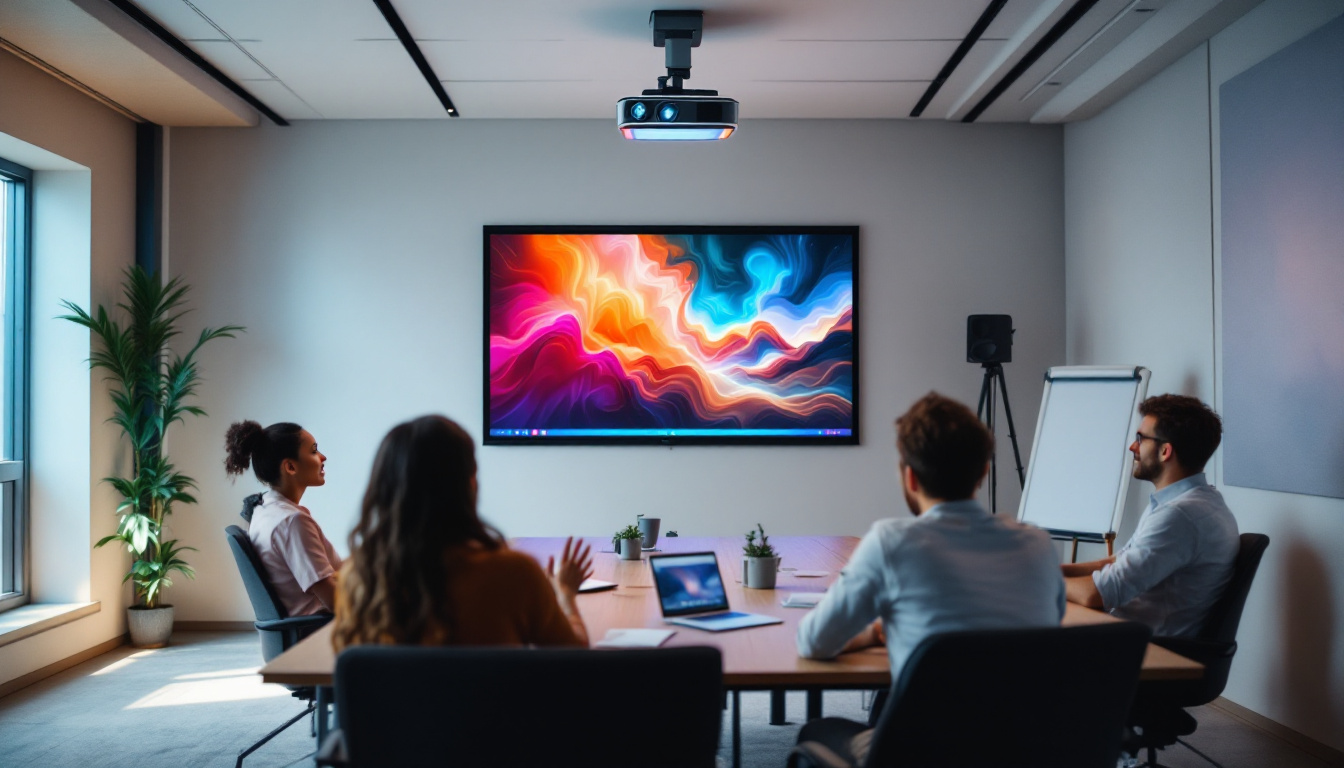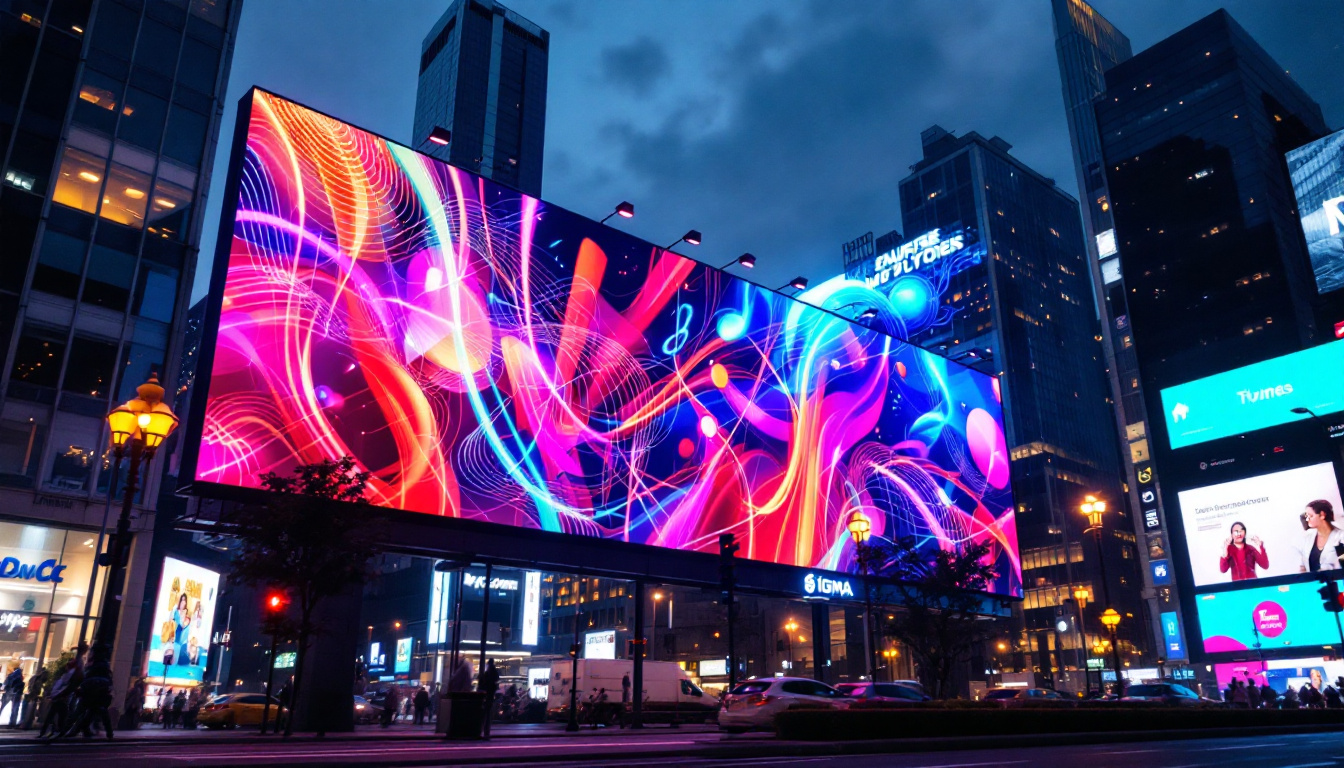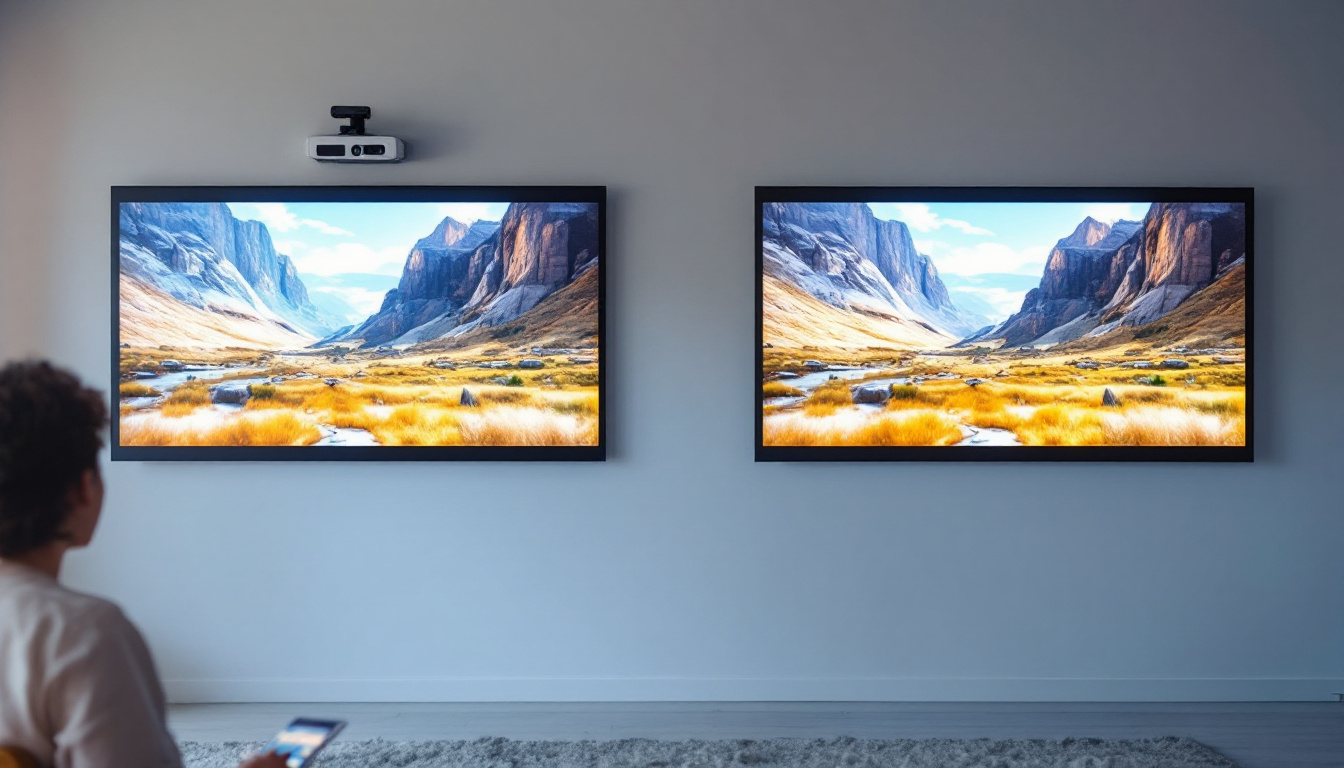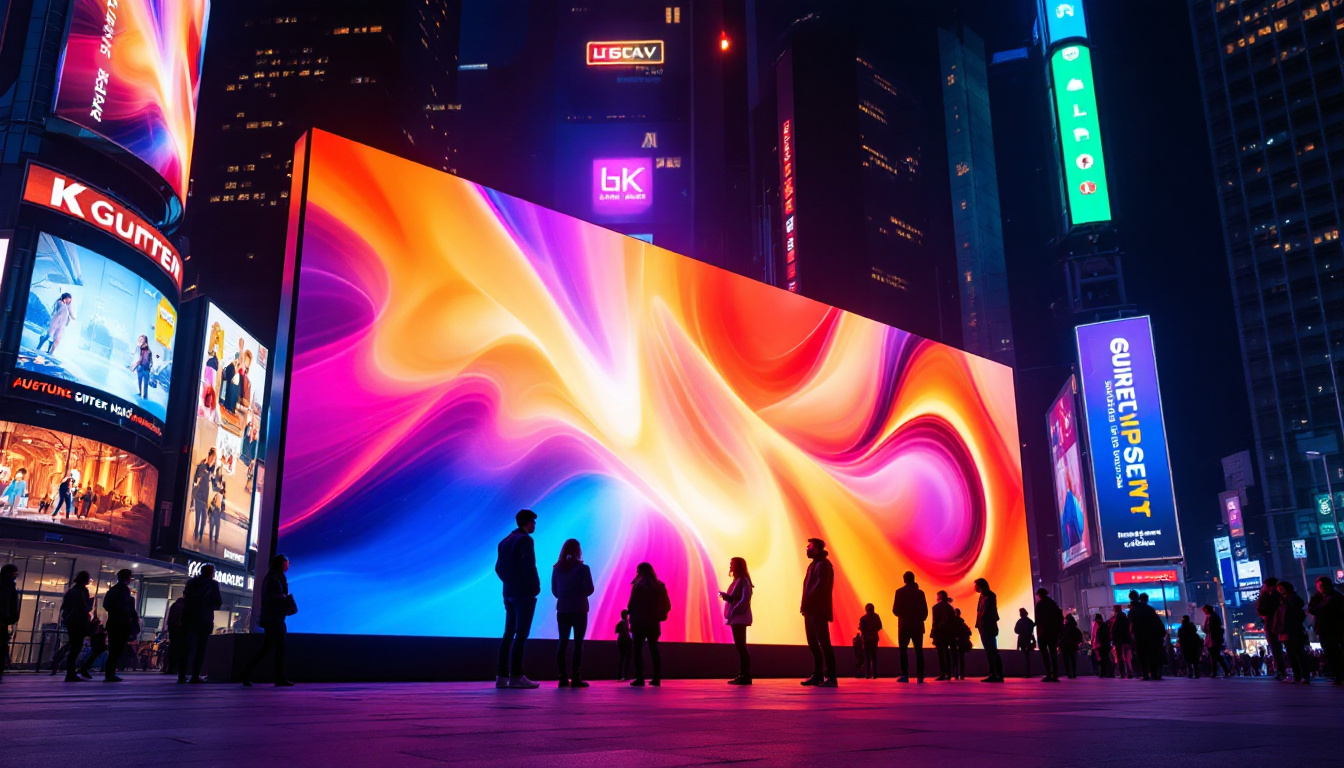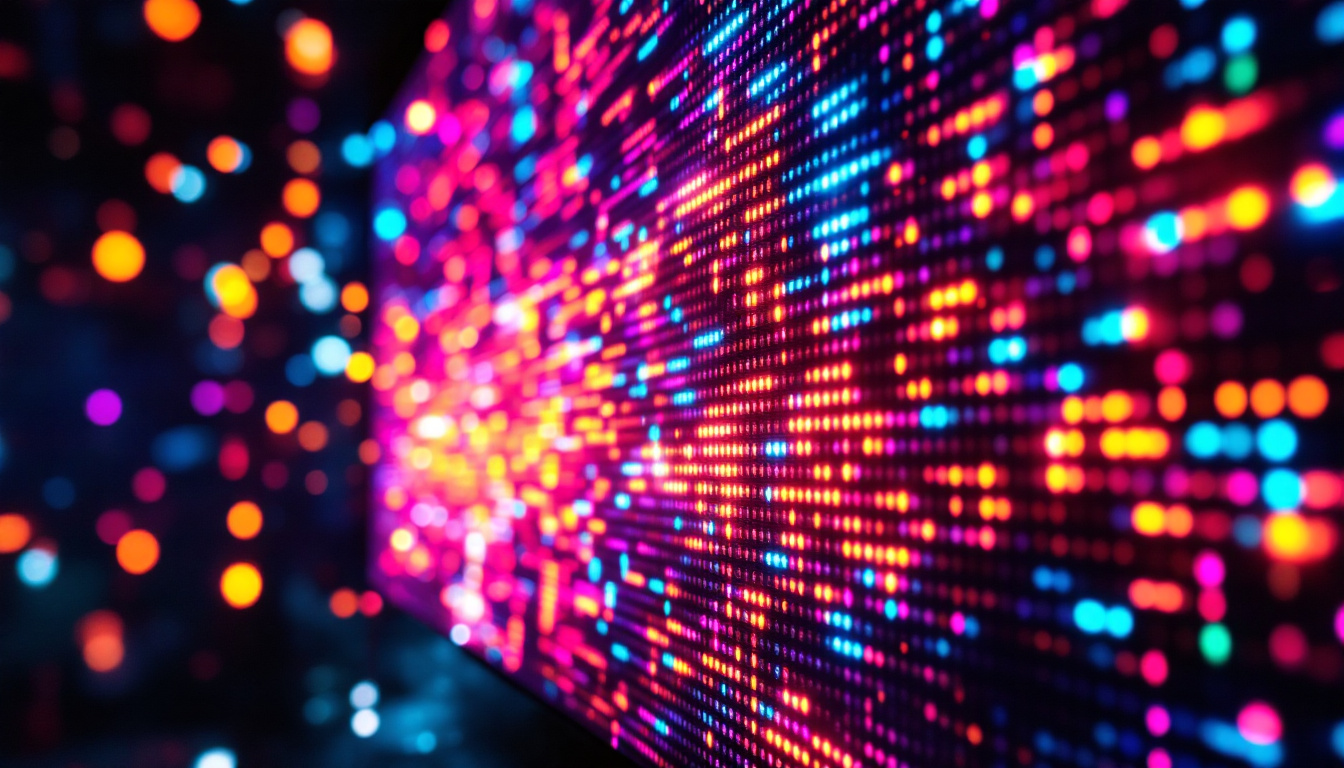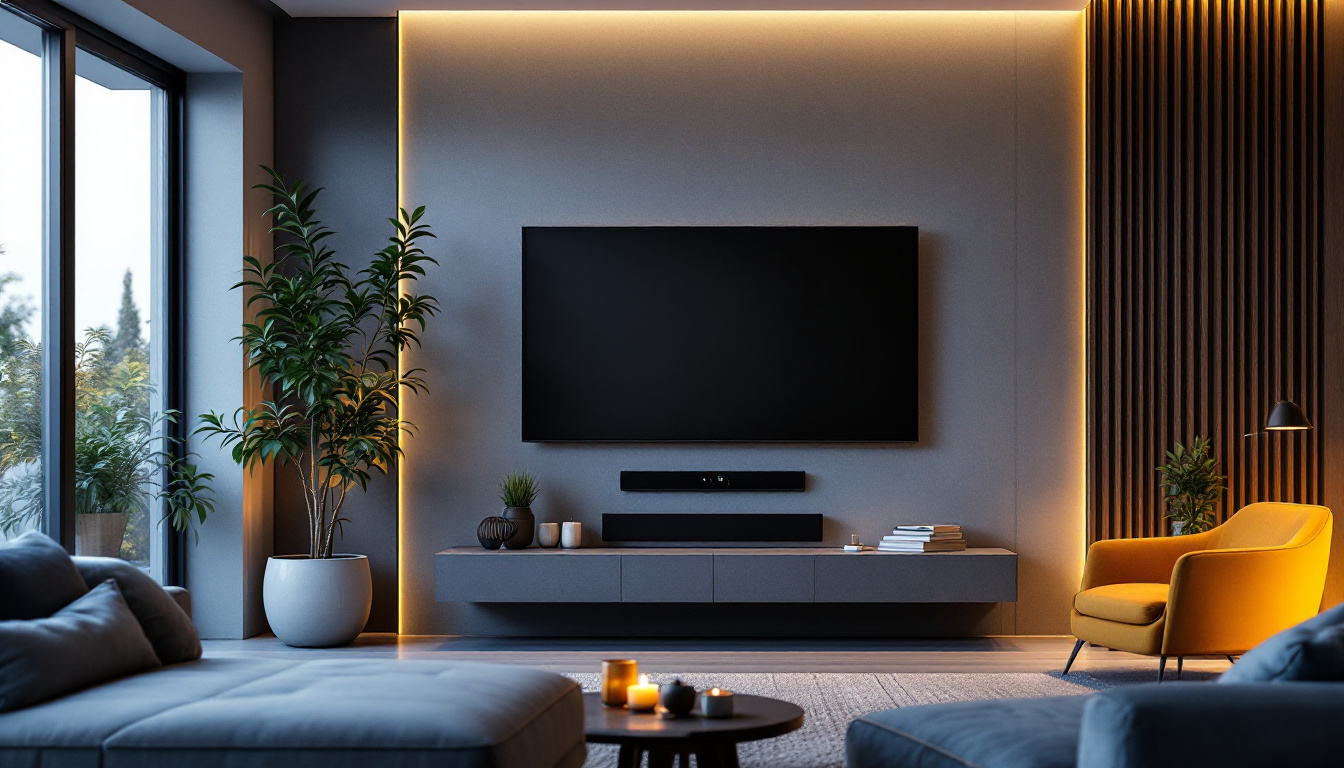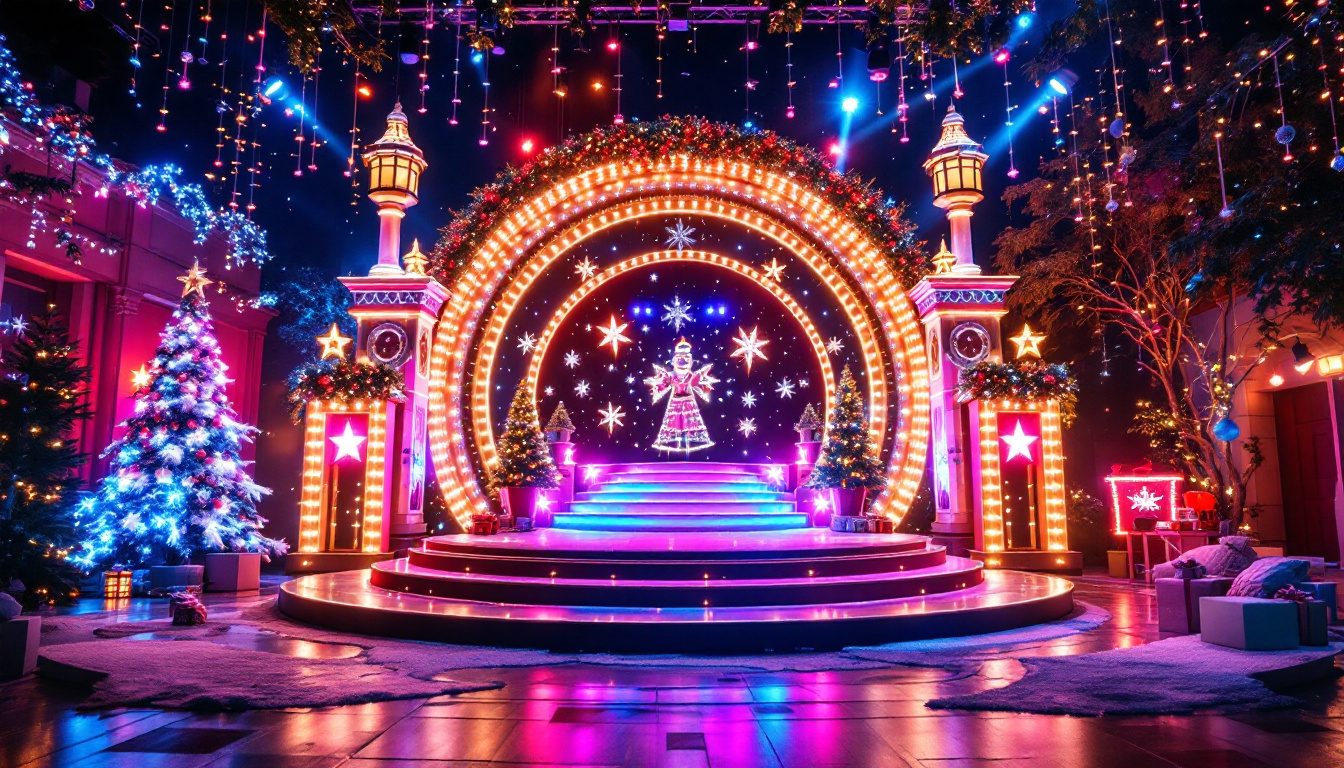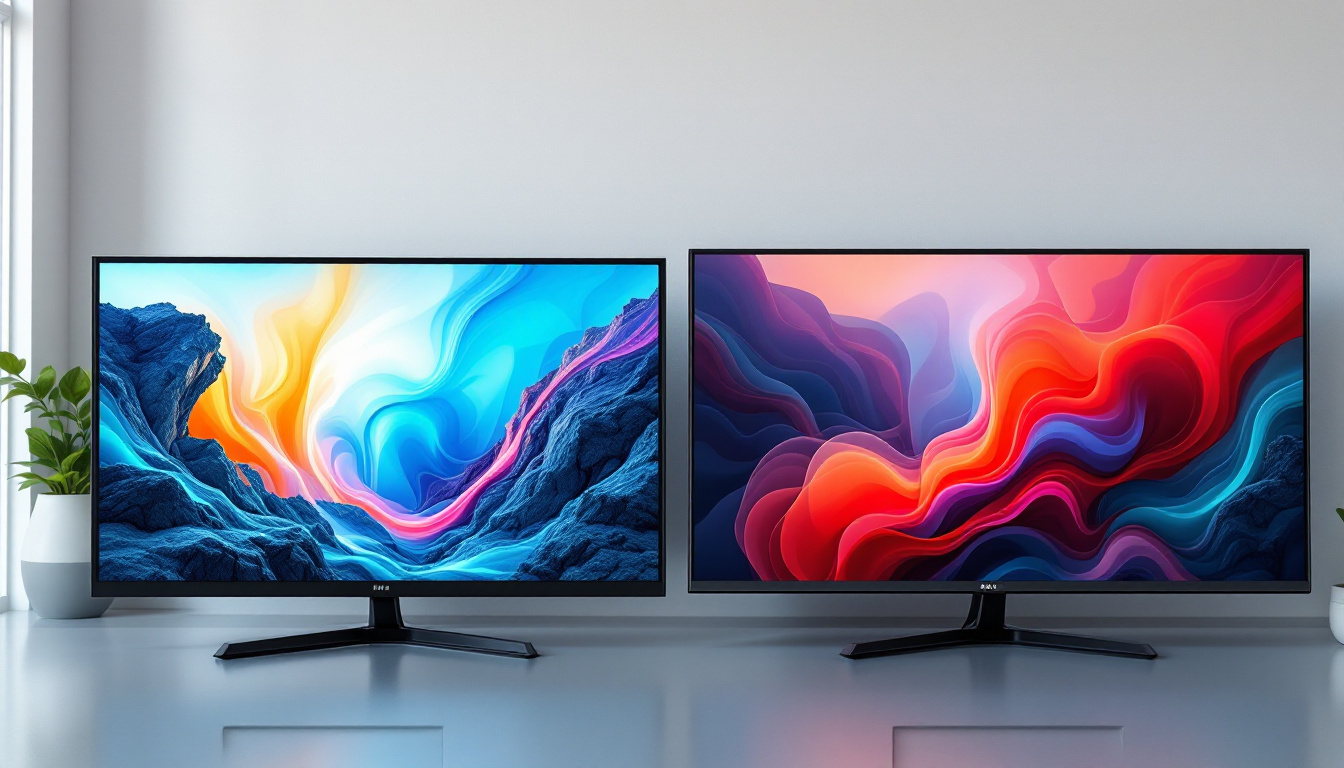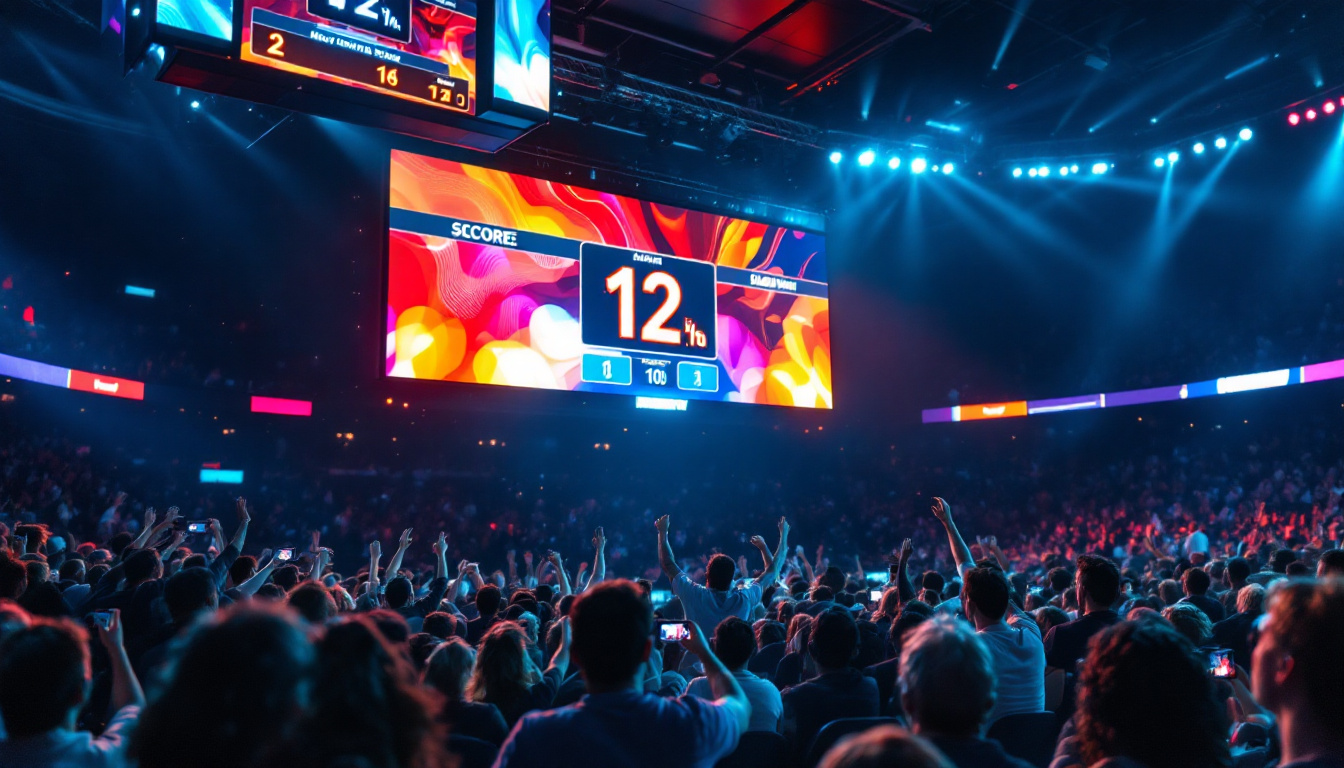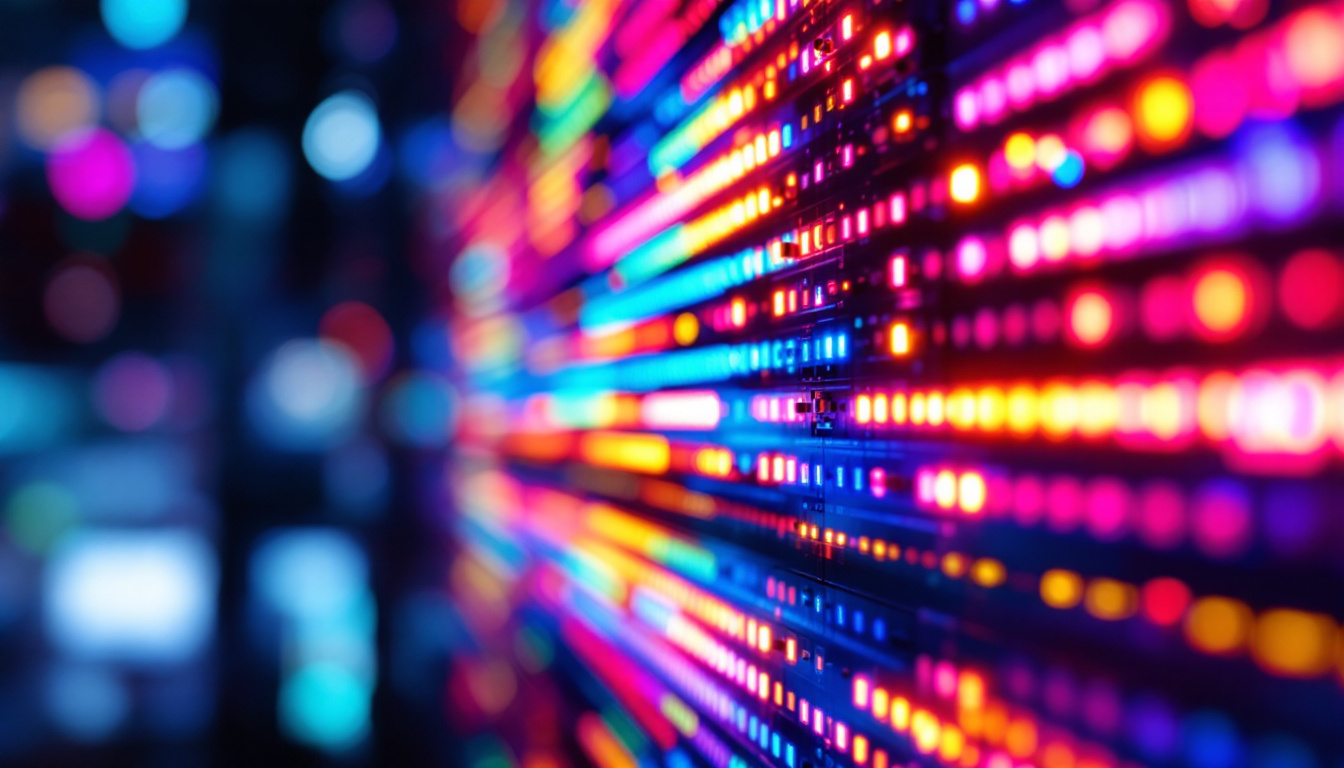In the modern world, LED displays have become ubiquitous, transforming the way information is presented across various platforms. From billboards to televisions, these displays offer vibrant colors, high contrast, and energy efficiency. Understanding the technology behind LED displays can enhance appreciation for their capabilities and applications.
What is an LED Display?
An LED display utilizes light-emitting diodes (LEDs) to produce images and text. Unlike traditional displays that rely on backlighting or other forms of illumination, LED displays generate light directly from the diodes. This technology allows for brighter images and deeper blacks, making LED displays particularly effective in various lighting conditions. The efficiency of LED technology also contributes to lower energy consumption, making it a more environmentally friendly choice compared to older display technologies.
Additionally, LED displays are known for their longevity, often lasting tens of thousands of hours before needing replacement. This durability makes them a cost-effective solution in the long run, especially for businesses and organizations that require consistent, high-quality visual output for advertising or informational purposes.
Types of LED Displays
There are several types of LED displays, each suited for different applications. The most common types include:
- Direct View LED: These displays consist of individual LED modules that form a larger screen. They are often used in outdoor advertising and large venues due to their high brightness and visibility. Their modular nature allows for easy scalability, making them ideal for large-scale installations such as stadiums and concert venues.
- LED-backlit LCD: This type combines traditional LCD technology with LED backlighting. It offers better color accuracy and contrast compared to standard LCDs. The use of LED backlighting also allows for thinner screen designs, making these displays popular in consumer electronics like televisions and computer monitors.
- Organic LED (OLED): OLED displays use organic compounds that emit light when electricity is applied. They are known for their exceptional color reproduction and flexibility, making them ideal for high-end televisions and mobile devices. The ability to create ultra-thin and curved screens has opened up new possibilities in design and user experience.
How LED Displays Work
The operation of an LED display is based on the principles of electroluminescence. When an electric current passes through the semiconductor material in an LED, it emits light. This light can be modulated to create various colors by adjusting the intensity of the current.
In a typical RGB (Red, Green, Blue) LED display, each pixel consists of three diodes—one for each primary color. By varying the brightness of each diode, a wide spectrum of colors can be produced, allowing for detailed images and videos. This capability is further enhanced by advanced technologies such as dynamic range adjustment and color calibration, which ensure that the display maintains accuracy and vibrancy under different viewing conditions.
Moreover, modern LED displays often incorporate smart technology, enabling features such as automatic brightness adjustment based on ambient light and connectivity options for seamless integration with other devices. This adaptability not only improves user experience but also enhances the display’s functionality in various environments, from home theaters to professional presentations.
Advantages of LED Displays
LED displays offer numerous advantages over traditional display technologies, making them a popular choice for both commercial and residential applications.
Energy Efficiency
One of the most significant benefits of LED displays is their energy efficiency. Compared to traditional incandescent or fluorescent displays, LEDs consume significantly less power. This not only reduces electricity bills but also minimizes the environmental impact.
Moreover, the longevity of LED displays means they require less frequent replacement, further contributing to energy savings over time. In fact, many LED displays can last up to 50,000 hours or more, which translates to years of reliable performance without the need for constant maintenance. This durability not only benefits the environment by reducing waste but also provides a cost-effective solution for businesses and homeowners alike.
High Brightness and Contrast
LED displays are known for their high brightness levels, which make them suitable for outdoor use. They can remain visible even in direct sunlight, a feat that many traditional displays struggle to achieve. This characteristic is particularly important for advertising and public information displays.
Additionally, the contrast ratio of LED displays is superior, providing deeper blacks and more vibrant colors. This enhances the viewing experience, whether for entertainment or information dissemination. The ability to display content in high definition with stunning clarity allows for more engaging presentations, making LED displays a preferred choice for digital signage and multimedia applications. As a result, businesses can capture the attention of potential customers more effectively, leading to increased foot traffic and sales.
Versatility and Flexibility
LED displays are incredibly versatile, finding applications in various sectors. From sports arenas and concert venues to retail environments and home theaters, the adaptability of LED technology allows for creative installations and configurations.
Furthermore, advancements in technology have led to the development of flexible LED displays, which can be bent or shaped to fit unique spaces, offering endless possibilities for design and functionality. This innovation opens up new avenues for artistic expression, allowing designers to create immersive environments that captivate audiences. Whether it’s a curved display wrapping around a stage or a modular setup that can be rearranged for different events, the flexibility of LED technology ensures that it can meet the evolving needs of modern architecture and design. As a result, LED displays not only serve practical purposes but also enhance the aesthetic appeal of any space they occupy.
Applications of LED Displays
The applications of LED displays are vast and varied, reflecting their versatility and effectiveness in different environments.
Advertising and Marketing
In the advertising industry, LED displays have revolutionized how brands communicate with consumers. Digital billboards and signage can be updated in real-time, allowing for dynamic content that captures attention more effectively than static displays.
Moreover, the ability to display high-definition video and animations enhances engagement, making LED displays a preferred choice for marketers looking to create impactful campaigns.
Entertainment and Events
LED displays play a crucial role in the entertainment sector, particularly in concerts, festivals, and sports events. Large-scale LED screens provide audiences with clear visuals, enhancing the overall experience.
In addition, LED technology is used in stage productions to create immersive environments, with screens that can change dynamically to reflect the mood and theme of the performance.
Information and Wayfinding
Public spaces such as airports, train stations, and shopping malls utilize LED displays for information dissemination. Digital signage can provide real-time updates on schedules, directions, and promotions, improving the overall efficiency of these environments.
Wayfinding systems equipped with LED displays guide visitors through complex spaces, ensuring they have the information they need at their fingertips.
Challenges and Considerations
Despite their many advantages, LED displays are not without challenges. Understanding these limitations is essential for making informed decisions regarding their use.
Initial Cost
The initial investment for LED displays can be significant, particularly for large installations. While the long-term savings on energy and maintenance can offset these costs, budget constraints may pose a challenge for some organizations.
It is crucial to weigh the upfront costs against the potential benefits and savings over time when considering an LED display investment.
Environmental Concerns
While LED technology is generally more energy-efficient than traditional lighting, there are environmental concerns related to the disposal of LED displays. The components used in LEDs, such as heavy metals, can pose risks if not handled properly.
Organizations must ensure that they have appropriate recycling and disposal plans in place to mitigate these environmental impacts.
Viewing Angles and Distance
Another consideration is the viewing angle and distance. While LED displays offer excellent brightness and color reproduction, their performance can vary based on the viewer’s position. For optimal viewing, careful planning regarding placement and distance is essential.
Understanding the specific requirements of the intended audience will help ensure that the display performs effectively in its environment.
The Future of LED Displays
As technology continues to evolve, the future of LED displays looks promising. Innovations are being developed that will enhance their capabilities and expand their applications.
Advancements in Technology
Emerging technologies, such as microLED and miniLED, are paving the way for even higher resolution displays with improved color accuracy and brightness. These advancements will enable the creation of ultra-thin and flexible displays, further enhancing versatility in design.
Additionally, integration with smart technology and the Internet of Things (IoT) will allow LED displays to become more interactive and responsive to user needs, creating a more engaging experience.
Sustainability Initiatives
With growing awareness of environmental issues, the LED industry is focusing on sustainability. Manufacturers are exploring eco-friendly materials and production processes to minimize the environmental impact of LED displays.
Efforts to improve the recyclability of components and reduce energy consumption during production are also underway, aligning with global sustainability goals.
Integration with Augmented and Virtual Reality
The integration of LED displays with augmented reality (AR) and virtual reality (VR) technologies is another exciting development. This fusion could lead to immersive experiences that blend the physical and digital worlds, opening new avenues for entertainment, education, and marketing.
As these technologies mature, the potential for interactive and engaging content delivered through LED displays will expand, making them an even more integral part of modern communication.
Conclusion
LED displays have transformed the landscape of visual communication, offering unmatched brightness, energy efficiency, and versatility. Their applications span numerous industries, from advertising to entertainment, making them a vital tool for modern businesses and organizations.
While challenges exist, ongoing advancements in technology and sustainability practices promise a bright future for LED displays. As they continue to evolve, these displays will undoubtedly play an increasingly significant role in how information is conveyed and experienced in our daily lives.
Discover the Future of Visual Communication with LumenMatrix
Ready to elevate your visual impact? Explore LumenMatrix’s innovative LED display solutions and join the forefront of digital signage technology. Whether you’re looking to captivate your audience with an Indoor LED Wall Display, make a statement with a high-visibility Outdoor LED Wall Display, or create a unique experience with Custom LED Displays, LumenMatrix has the cutting-edge technology to bring your vision to life. Check out LumenMatrix LED Display Solutions today and transform the way you communicate with your audience.

